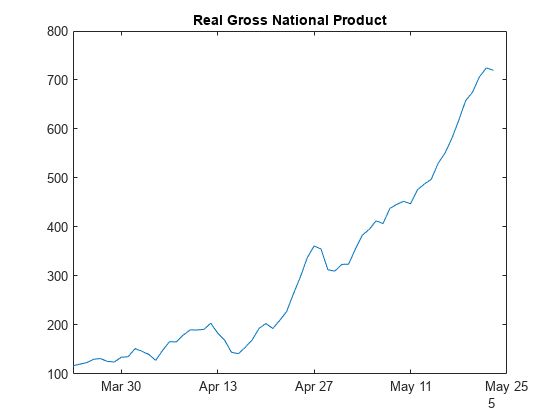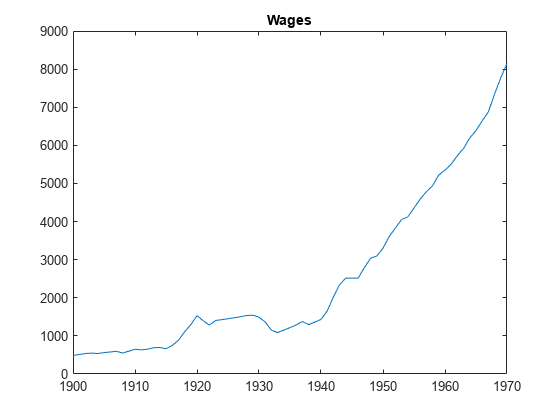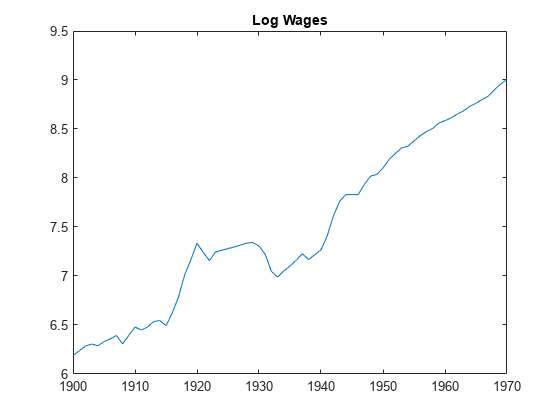kpsstest
KPSS test for stationarity
Syntax
Description
h = kpsstest(y)
StatTbl = kpsstest(Tbl)Tbl. To select a different variable in
Tbl to test, use the
DataVariable name-value
argument.
[___] = kpsstest(___,
specifies options using one or more name-value arguments in
addition to any of the input argument combinations in previous syntaxes.
Name=Value)kpsstest returns the output argument combination for the
corresponding input arguments.
Some options control the number of tests to conduct. The following
conditions apply when kpsstest conducts
multiple tests:
For example,
kpsstest(Tbl,DataVariable="GDP",Alpha=0.025,Lags=[0
1]) conducts two tests, at a level of significance
of 0.025, for the presence of a unit root in the variable
GDP of the table Tbl.
The first test includes 0 autocovariance lags in
the Newey-West estimator of the long-run variance and the second
test includes 1 autocovariance lag.
Examples
Input Arguments
Name-Value Arguments
Output Arguments
More About
Tips
To draw valid inferences from a KPSS test, you must determine a suitable value for the
Lagsargument. The following methods can determine a suitable number of lags:Begin with a small number of lags, and then evaluate the sensitivity of the results by adding more lags.
Kwiatkowski et al. [2] suggest that a number of lags on the order of , where T is the effective sample size, is often satisfactory under both the null and the alternative.
For consistency of the Newey-West estimator, the number of lags must approach infinity as the sample size increases.
With a specific testing strategy in mind, determine the value of the
Trendargument by the growth characteristics of the input time series.If the input series grows, include a trend term by setting
Trendtotrue(default). This setting provides a reasonable comparison of a trend stationary null and a unit root process with drift.If a series does not exhibit long-term growth characteristics, exclude a trend term by setting
Trendtofalse.
Algorithms
Test statistics follow nonstandard distributions under the null, even asymptotically. Kwiatkowski et al. [2] use Monte Carlo simulations, for models with and without a trend, to tabulate asymptotic critical values for a standard set of significance levels between 0.01 and 0.1.
kpsstestinterpolates critical values and p-values from these tables.
References
[1] Hamilton, James D. Time Series Analysis. Princeton, NJ: Princeton University Press, 1994.
[2] Kwiatkowski, D., P. C. B. Phillips, P. Schmidt, and Y. Shin. “Testing the Null Hypothesis of Stationarity against the Alternative of a Unit Root.” Journal of Econometrics. Vol. 54, 1992, pp. 159–178.
Version History
Introduced in R2009b


